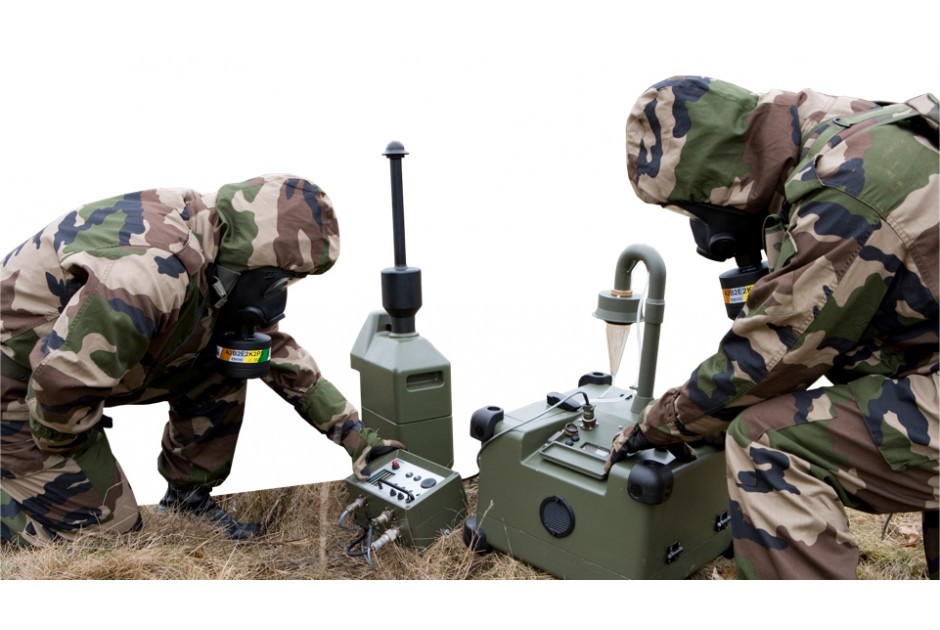ASTM F1291 Thermal manikin steady state thermal insulation of clothing ensembles testing
The ASTM F1291 standard provides a method for determining the steady-state thermal insulation properties of clothing ensembles using a human thermal manikin. This test is critical in evaluating how well protective equipment, such as military uniforms and cold-weather gear, insulate against environmental heat loss. The ASTM F1291 test ensures that the clothing systems designed to protect personnel from harsh conditions are effective in real-world scenarios.
The primary objective of this testing method is to establish a baseline for thermal performance under controlled laboratory conditions. This allows manufacturers and military personnel to make informed decisions regarding gear design, material selection, and overall system effectiveness. Understanding how insulation properties vary with different environmental factors is essential for ensuring that the equipment can perform reliably in diverse climates.
The human thermal manikin used in this testing simulates a person's thermal response by incorporating heat sources at key body locations. The test involves exposing the manikin to controlled heat and cold conditions, measuring the temperature of the skin surface and the air surrounding it, and recording the rate of heat transfer through the clothing ensemble. This data is then used to calculate the overall thermal resistance (R-value) or R-factor, which quantifies how effectively the ensemble insulates against heat loss.
The ASTM F1291 standard specifies detailed procedures for preparing the manikin, setting up the test environment, and conducting the measurements. The test can be performed in both dry and humid conditions to simulate different environmental scenarios. This flexibility allows researchers to assess how various factors—such as humidity levels or wind chill—impact insulation performance.
The ASTM F1291 method is widely used by manufacturers of protective clothing, particularly those serving the military sector, to ensure that their products meet stringent thermal protection requirements. By adhering to this standard, companies can demonstrate compliance with international regulations and maintain a competitive edge in the market. Moreover, the results from these tests are critical for improving product design and enhancing user safety.
The ASTM F1291 test also plays an important role in research and development efforts aimed at creating more advanced protective clothing. By continuously refining testing protocols and expanding the scope of environmental conditions tested, researchers can gain deeper insights into thermal insulation properties. This knowledge is invaluable for developing next-generation materials that offer enhanced protection against extreme cold or heat.
In addition to its technical significance, ASTM F1291 has broader implications for public safety and national security. Effective thermal management in protective clothing ensures that personnel operating in hostile environments are less likely to suffer from hypothermia or heat stress. This translates into improved mission success rates and reduced healthcare costs associated with occupational injuries.
It is important to note that the ASTM F1291 method focuses solely on steady-state conditions, meaning it measures thermal properties when the system reaches equilibrium. While this approach provides valuable insights into overall insulation capabilities, it does not account for transient effects such as sweating or rapid temperature changes. For a comprehensive evaluation of clothing performance, complementary tests like dynamic thermal manikin testing (ASTM F1954) should also be considered.
Why It Matters
The ASTM F1291 test is crucial for ensuring that protective equipment meets rigorous standards and performs effectively under real-world conditions. Military personnel, especially those stationed in extreme climates, rely on well-insulated clothing to maintain body temperature and prevent thermal stress-related issues.
- Enhanced Safety: Effective thermal insulation reduces the risk of heat-related illnesses or cold-induced injuries.
- Better Performance: Accurate testing helps manufacturers optimize material selection and design for optimal protection.
- Informed Decision-Making: Compliance with this standard provides a benchmark for evaluating new products and improving existing ones.
The results of ASTM F1291 testing are widely recognized within the industry, adding credibility to manufacturers' claims about their product's thermal performance. This recognition fosters trust among end users who depend on these products for critical missions.
Moreover, by adhering to this standard, organizations can ensure that they meet regulatory requirements and contribute to overall standards improvement in the field of protective clothing design.
Benefits
- Informed Decision-Making: Provides accurate data on thermal performance, aiding in the design and development of more effective protective clothing.
- Enhanced Safety: Ensures that personnel operating in extreme environments are better protected from heat or cold stress.
- Regulatory Compliance: Demonstrates adherence to industry standards, building trust among end users and stakeholders.
- Improved Product Quality: Identifies areas for improvement in material selection and design.
The benefits extend beyond individual products; they contribute to overall advancements in protective equipment technology, ultimately enhancing public safety and operational effectiveness.
Environmental and Sustainability Contributions
ASTM F1291 testing plays a vital role in promoting sustainable practices by ensuring that protective clothing is designed with both performance and environmental impact in mind. By identifying the most effective materials and construction methods, this standard helps minimize resource consumption while maximizing thermal protection.
Additionally, the insights gained from ASTM F1291 testing can lead to innovations that reduce waste throughout the lifecycle of a product, from raw material sourcing to end-of-life disposal. For instance, manufacturers may explore using recycled materials or developing biodegradable alternatives to enhance sustainability.
The focus on optimizing thermal performance also encourages innovation in energy-efficient manufacturing processes and packaging solutions, further supporting environmental goals. Ultimately, adherence to ASTM F1291 fosters a culture of responsibility towards the environment, aligning industry practices with global commitments to sustainable development.





